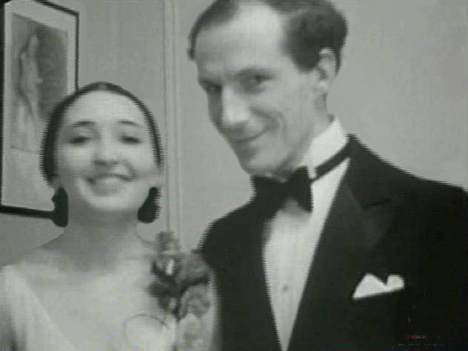Leon Theremin
by Andy Boyd
Today, an aural oddity. The University of Houston presents this series about the machines that make our civilization run, and the people whose ingenuity created them.
It's been called the strangest musical instrument ever conceived. Unlike any other, the theremin is never actually touched when played. Instead, a musician controls volume and pitch using her hands to interfere with electromagnetic fields generated by the device. Used in the soundtrack of the 1951 science fiction classic The Day the Earth Stood Still, the theremin's eerie wailings have ever since conjured up images of sinister aliens and creepy monsters.
The Day The Earth Stood Still theme music
What few people realize is that the theremin was originally promoted by its Russian creator Leon Theremin as a serious musical instrument. Born in 1896, Theremin's experimentation with electronic instruments led him to the Kremlin where he personally demonstrated his invention to Vladmir Lenin. Captivated by Theremin's work, Lenin granted him permission to travel and present exhibitions, telling Theremin "come to see me if you need help."
.png)
Leon Theremin performing a trio for theremin, voice and piano, c. 1924. Photo Credit:Wikimedia Commons
Theremin's journeys took him to many of the greatest performance halls in the world, including the Grand Opera House in Paris and the Royal Albert Hall in London. New York's Metropolitan Opera House served as the venue for Theremin's 1928 debut in the United States where he remained for eleven years with the support of U.S. patrons. Here, Theremin enjoyed a life of notoriety, research, and teaching, meeting innumerable luminaries — including Albert Einstein, whom he hosted for an extended visit.

Clara Rockmore and Leon Termen at a birthday celebration. Photo Credit: Wikimedia Commons
Theremin's idyllic life came to an abrupt halt when he was forcibly abducted from his Manhattan apartment and disappeared to the world. Decades later a personal history as incongruous as that of the Soviet Union would emerge: time in a labor camp; years working for Soviet intelligence; purported recipient of a highly prestigious Stalin medal; a return to teach music at the Moscow Conservatory of Music; and dismissal from the conservatory while his musical instruments were hacked to pieces with an axe. According to Theremin, at the time of his dismissal, a conservatory administrator informed him that electricity was for electrocutions, not music.

Prisoner labor at construction of Belomorkanal, 1932. Photo Credit: Wikimedia Commons
Though there remain pockets of avid theremin enthusiasts, Theremin's grand vision of an instrument as common as the violin was never realized. Yet, his influence on the dawning era of electronic music was immense. Robert Moog, creator of the Moog synthesizer and himself one of the most influential figures in the evolution of electronic instruments, was fascinated with the theremin. In a heartfelt interview, Moog aptly summarized Theremin's impact, calling his work the "biggest, fattest, most important musical cornerstone of the whole electronic music movement," and adding, "that's where it all began."
Theremin virtuoso Clara Rockman playing The Swan
I'm Andy Boyd, at the University of Houston, where we're interested in the way inventive minds work.
(Theme music)
This episode is an updated version of the episode LEON THEREMIN
O. Mattis. Interview with Leon Theremin, June 16, 1989. http://www.oddmusic.com/theremin/theremin_interview_1.html. Accessed June 7, 2016.
L. Theremin. "A Short Memoir." January 12, 1983. http://www.oddmusic.com/theremin/theremin_bio.html. Accessed June 7, 2016.
Theremin: An Electronic Odyssey. Documentary film by Steven M. Martin available on DVD. Copyright 1993, Orion Classics. Copyright 2001, MGM Home Entertainment, Inc.
This episode was first aired on June 9, 2016